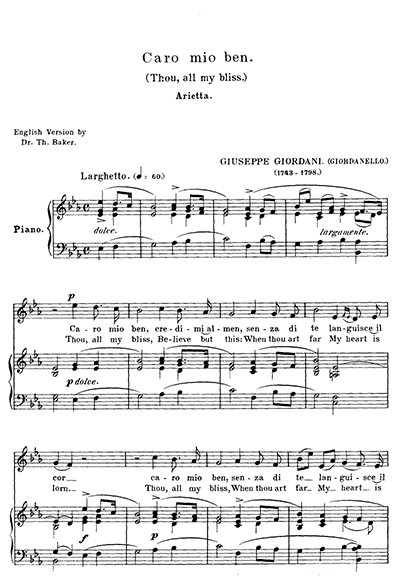
Vocal Course Lesson 12

Overview"what this lesson is about"
Classical Singing
Caro Mio Ben is considered one of the standard classic Italian Arias. We’ve included the sheet music for this song so you can learn it. Our two main focuses on this song are; Moving the Sound Back; Maximizing Breath Support and Singing On The Vowel.
Watch The Video
Moving the Sound Back
Classical singing uses a sound that we can call “Back”, which means that your larynx is low, and your nose is more closed. When you do these actions, you will feel more resonance in the back part of your mouth and pharynx, and can get accustomed to “bringing the sound back”.
Maximizing Breath Support
Breath support means feeling strength in your abdomen and engaging your diaphragm in order to control your air. By expanding your abdomen out against your finger as you hiss, you can feel how supporting your voice with your diaphragm can improve your vocal tone. Maximizing breath support is important for classical singing because it requires a louder volume and strength than contemporary singing.
Singing On The Vowel
Good singing means creating elegant lines with your phrases. Try to minimize the interruptions of consonants like “T, P, and N”, and keep your voice moving through the vowels. This can be accomplished by learning to form your consonants with your mouth open using your tongue. By releasing your jaw and getting skillful with your tongue, your voice will become more resonant and beautiful.
Practice Routine
Practice Time : 7 days, 15 – 30 minutes
Warm up with Scale 8 with all the vowels, practice bringing the sound back. Work on keeping an even vibrato.
• Ah (father)
• Eh (let)
• Ee (feet)
• Oh (no)
• Oo (boot)
Scale 8
Scale 8
Practice Scale 3 with the following sounds. Work on keeping your jaw still and forming the consonants with your tongue.
• La
• De
• Na
• To
Scale 3
Scale 3